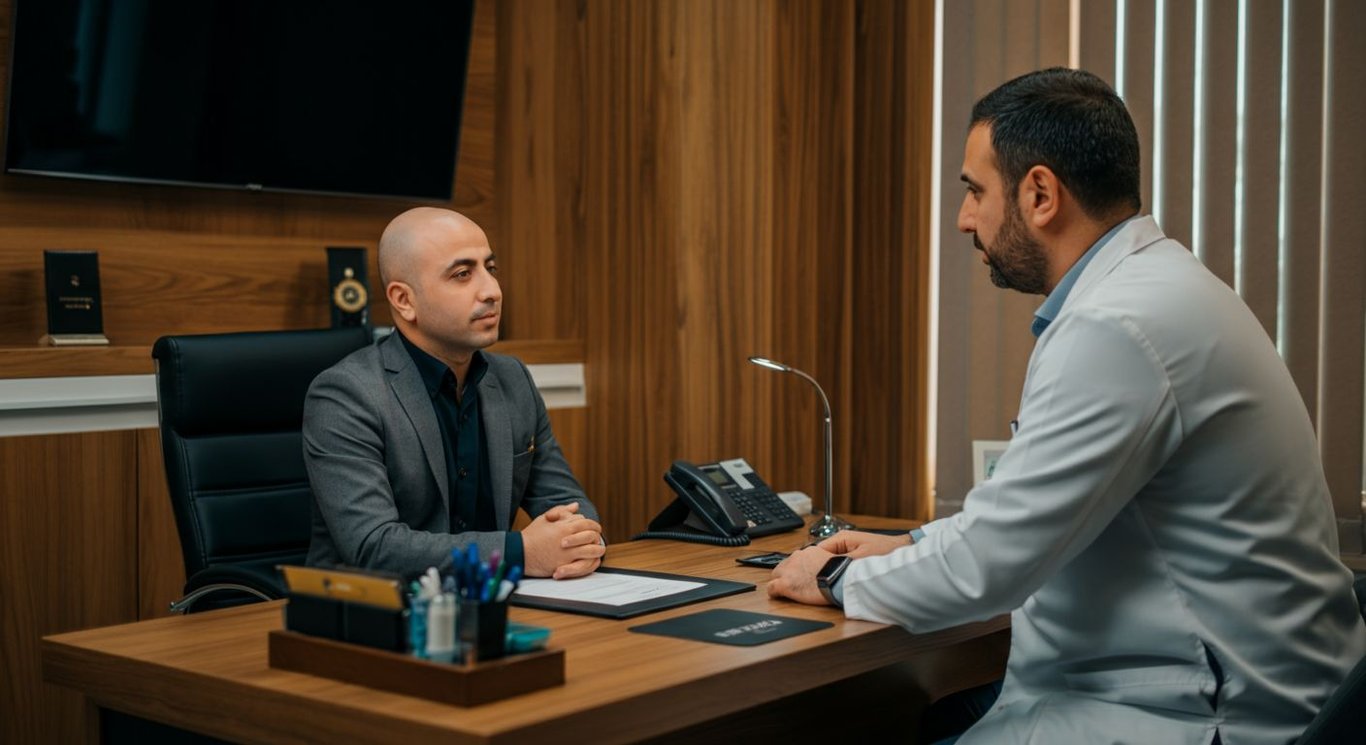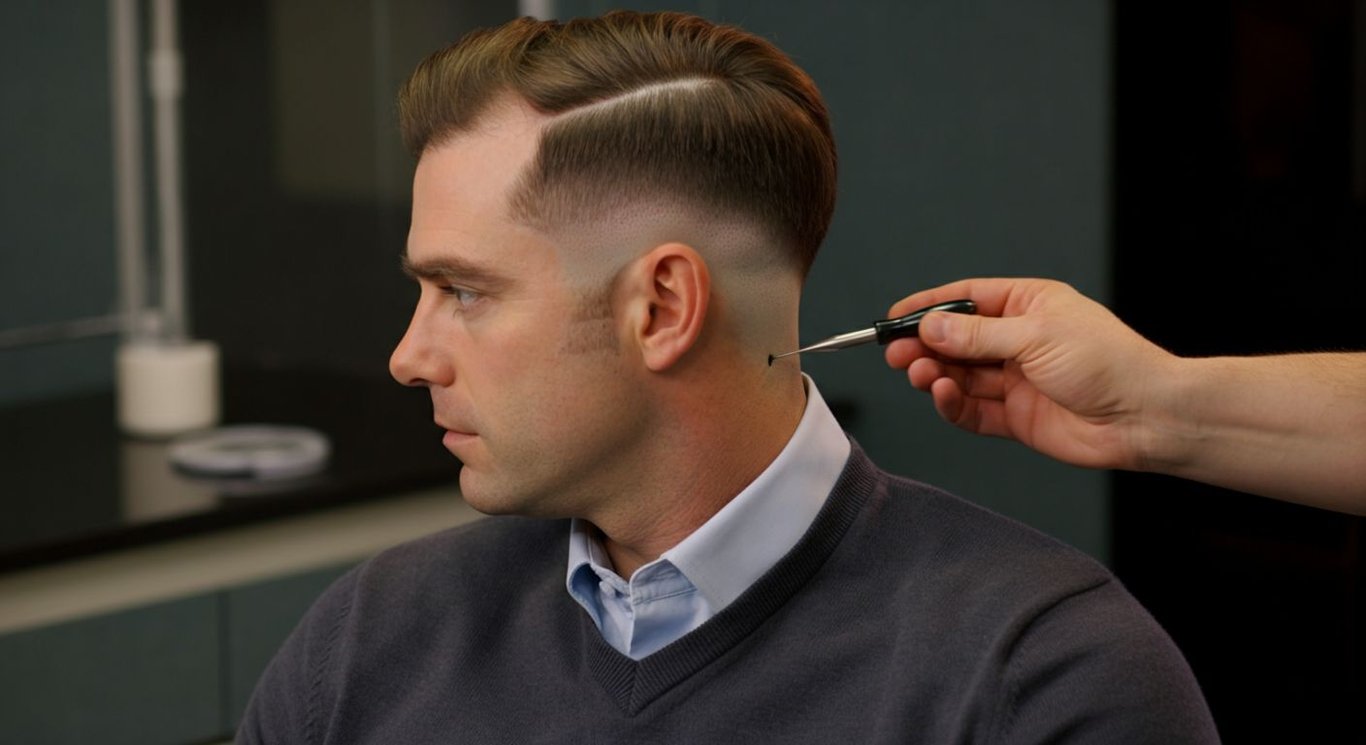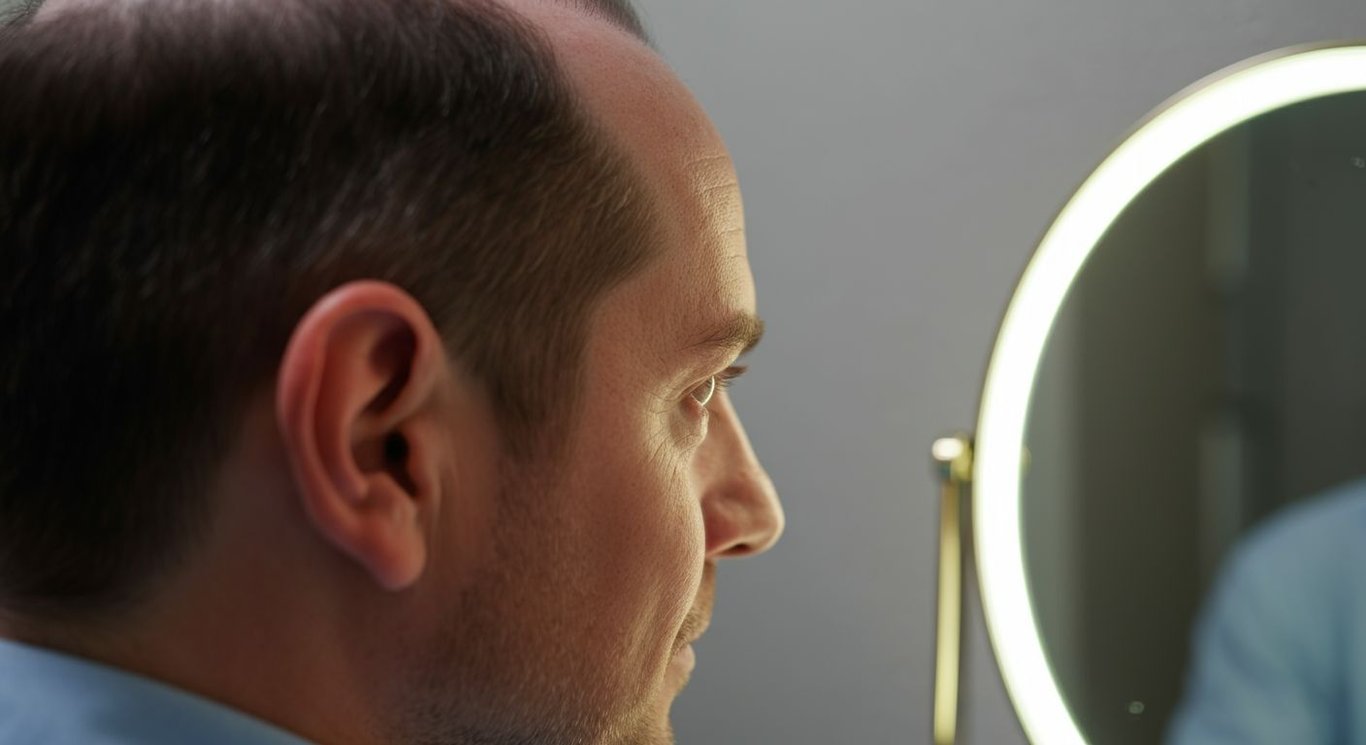Hair Transplant: Unlocking a Fuller Head of Hair
Achieve a naturally fuller head of hair at estethica. Our cutting-edge hair transplant methods ensure long-lasting results and a rejuvenated appearance.
Hair loss can be a distressing experience, but modern hair transplant techniques offer promising solutions. With the right approach, achieving a naturally fuller head of hair is possible. In this article, we'll explore the causes of hair loss, the various hair transplantation techniques available, their effectiveness, and what to expect during recovery. estethica, a pioneer in advanced transplantation procedures, provides cutting-edge solutions to help you regain confidence.
Understanding Hair Loss: Identifying the Root Cause
The Multifaceted Nature of Hair Loss
Hair loss presents differently for everyone, influenced by a complex interplay of genetic predispositions, hormonal fluctuations, and personal lifestyle habits. For example, male pattern baldness, or androgenetic alopecia, often stems from a combination of genetic sensitivity to dihydrotestosterone (DHT) and the natural aging process. A woman experiencing hair thinning may find hormonal imbalances related to menopause or thyroid issues are contributing factors. Identifying these precise factors is critical. Knowing whether the cause is hereditary, like the kind that affects many men as they age, or due to temporary conditions such as stress, ensures that any hair restoration strategy is tailored and effective.
Diagnostic Approaches at estethica
At estethica, comprehensive diagnostics form the cornerstone of personalized hair loss treatment plans. Understanding that hair loss can significantly affect one's self-esteem, similar to how Matthew McConaughey and Elon Musk addressed their hair concerns (perhaps through procedures like a hair transplant, or similar), estethica focuses on identifying the root causes. For instance, if a patient is experiencing hair thinning due to iron deficiency, estethica’s diagnostic process will uncover this, leading to a treatment plan that includes dietary adjustments or supplements. In another scenario, if the cause is related to autoimmune issues or scalp conditions, estethica’s specialists will tailor appropriate treatments to counter these specific problems. Much like finding a reputable clinic when searching for a "hair transplant clinic near me", finding the correct diagnosis is half the battle won.
Factors Influencing Hair Loss
- Nutritional Deficiencies: Imbalances in essential nutrients like iron, zinc, and biotin can lead to hair thinning and loss. Addressing these deficiencies through diet and supplements can help restore hair health.
- Stress and Trauma: High stress levels and traumatic events can trigger telogen effluvium, a temporary form of hair loss. Managing stress through relaxation techniques or therapy can mitigate this condition.
- Hormonal Imbalances: Conditions like thyroid disorders or polycystic ovary syndrome (PCOS) can disrupt hormonal balance, affecting hair growth. Hormonal therapies may be necessary to restore balance and hair health.

Follicular Unit Extraction (FUE): The Gold Standard in Hair Restoration
Precision and Care in FUE Procedures
FUE is indeed celebrated as a leading technique in hair restoration, largely due to its minimally invasive nature and the natural-looking results it provides. Unlike older methods, FUE involves extracting individual hair follicles directly from the scalp, which means no large incisions and therefore no linear scarring. At estethica, this method is performed with state-of-the-art tools that allow for maximum precision. Think of it as carefully selecting and relocating individual plants in a garden to achieve the most natural and aesthetically pleasing arrangement. This meticulous attention to detail ensures that each follicle is placed at the correct angle and depth, mimicking natural hair growth patterns. The goal is not only to restore hair but also to enhance overall appearance in a way that looks completely natural.
Advantages of Choosing FUE at estethica
Patients choosing estethica for their FUE hair transplant can expect a swift recovery and aesthetically superior outcomes. Compared to older strip harvesting methods, FUE's less invasive nature means less downtime. Patients often return to their normal activities within a few days. Imagine someone concerned about covering up signs of a procedure, similar to how celebrities like Matthew McConaughey have managed their hair transformations discreetly. The quick recovery coupled with the precision of the technique ensures that the hair restoration is nearly undetectable, providing natural-looking results. This blend of quick recovery and aesthetic precision is what sets estethica apart, especially for individuals searching for the "best hair transplant clinics near me".
Key Aspects of FUE Hair Restoration
- Individual Follicle Extraction: Each hair follicle is removed one by one using specialized micro-punches, ensuring minimal trauma to the scalp and surrounding areas.
- Natural Hairline Design: Our skilled surgeons meticulously plan the placement of each follicle to replicate a natural hairline, taking into account individual facial features and aesthetic goals.
- Enhanced Density and Coverage: FUE allows for precise control over graft placement, maximizing density and coverage in areas affected by thinning or baldness.

Is a Hair Transplant Permanent? Setting Realistic Expectations
Defining Long-Term Success of Hair Transplants
While a hair transplant is often considered a permanent solution to hair loss, it's essential to understand what "permanent" truly means in this context. The transplanted hair follicles, typically taken from the back or sides of the head (the "donor area"), are genetically resistant to the effects of DHT, the hormone primarily responsible for male pattern baldness. This resistance allows the transplanted hair to persist long-term, even as other non-transplanted hairs may continue to thin. Think of it as planting heartier species in a garden that are more capable of withstanding harsh conditions. The survival and vitality of these transplanted follicles, however, hinge on several factors including the individual’s health, the skill of the surgical team, and adherence to post-operative care guidelines. At estethica, we focus on maximizing the longevity of your hair transplant, to ensure that you are able to maintain results, avoiding outcomes that lead people to search for "elon musk hair implant" stories.
Maximizing the Longevity of Transplanted Hair
To ensure the lasting success of a hair transplant, several key steps must be followed both before and after the procedure. Proper pre-operative assessment can help foresee any potential challenges that may affect the transplant's success. At estethica, we emphasize this along with a personalized aftercare plan. This plan will involve gentle hair care practices, avoiding harsh chemicals, and protecting the scalp from excessive sun exposure. Regular follow-up appointments allow our specialists to monitor the health of the transplanted follicles and address any emerging issues promptly. Consider it analogous to maintaining a garden where regular care—pruning, watering, and pest control—ensures the plants thrive for years. This holistic approach helps estethica to stand out when compared to hair transplant clinics. Also, some patients seek solutions such as turkish hair implants for long-term solutions.
Best Practices for Prolonging Hair Transplant Results
- Follow a Gentle Hair Care Routine: Use mild, sulfate-free shampoos and conditioners to avoid irritating the scalp and damaging the transplanted hair.
- Protect Your Scalp from the Sun: Prolonged sun exposure can harm the scalp and weaken hair follicles. Wear a hat or use sunscreen on your scalp when outdoors.
- Stay Hydrated and Maintain a Healthy Diet: Proper hydration and a nutritious diet support overall health and hair growth. Include foods rich in vitamins, minerals, and proteins.

Navigating Hair Transplant Recovery: Essential Aftercare Tips
Understanding the Recovery Timeline Post-Transplant
Post-transplant care is indeed pivotal for ensuring optimal healing and fostering robust hair growth. Following a hair transplant, the initial days are crucial for graft stabilization and preventing complications. At estethica, utilizing advanced methodologies like DHI, we aim to minimize recovery times while maximizing patient comfort. Our comprehensive step-by-step recovery guide is specifically designed to facilitate a smooth healing process and promote vigorous hair health. These guidelines cover everything from gentle washing techniques to advice on avoiding activities that could jeopardize the newly transplanted follicles. This is particularly true for details, since hair transplant procedures are also very specific, like hair loss treatment. In essence, it's all about nurturing these new grafts to ensure they take root and flourish, providing long-term satisfaction with the procedure.
Essential Aftercare Practices for Optimal Results
Adhering to aftercare instructions diligently is vital for the success of a hair transplant. Immediate post-operative care typically involves avoiding strenuous activities that could increase blood flow to the scalp, as this can disrupt the healing process and dislodge the newly implanted grafts. Patients are advised to sleep with their head elevated for the first few nights to reduce swelling. It's also key to keep the scalp clean to prevent infection. Much like ensuring "turkish hair implants" are properly maintained, following these guidelines contributes significantly to a favorable outcome. Furthermore, estethica's approach includes personalized advice tailored to each patient's specific needs, such as guidance on when and how to resume regular hair washing. We also provide recommendations on managing any discomfort or itching that may occur during the healing phase. To ensure the best possible outcome and to avoid possible problems with this process, it is important to follow your doctor's instructions.
Key Components of Post-Transplant Care
- Gentle Cleansing: Begin washing your hair gently a few days post-surgery using a mild, sulfate-free shampoo to keep the scalp clean and free from infection.
- Avoid Direct Sunlight: Protect your scalp from direct sun exposure by wearing a loose-fitting hat or using sunscreen to prevent damage to the new hair follicles.
- Stay Hydrated and Eat Healthy: Proper hydration and a balanced diet rich in vitamins and minerals provide essential nutrients that support hair growth and overall healing.
FUE Hair Restoration: Minimally Invasive Techniques for Natural-Looking Results
Patient-Centric Hair Transplant Recovery: Personalized Care for Optimal Hair Growth
Frequently Asked Questions
What are the primary causes of hair loss that can be addressed with a hair transplant?
How does Follicular Unit Extraction (FUE) differ from older hair transplant techniques?
To what extent is a hair transplant considered a permanent solution for hair loss?
What aftercare steps are essential following a hair transplant to ensure successful hair growth?
Achieve your aesthetic goals with estethica's world-class surgical and aesthetic solutions.
📞 Schedule Your Free Consultation!